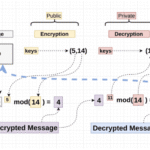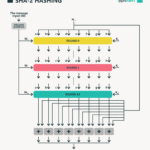In an era where digital privacy is increasingly compromised, the prospect of encrypting a Python script emerges as a pivotal consideration for programmers and data enthusiasts alike. Understanding the myriad of encryption techniques and their implementations can significantly shift one’s perspective on safeguarding sensitive information. This article delves into various methodologies of encryption within Python, illuminating their intricacies and practical applications.
Encryption is the process of transforming data into a secure format, rendering it unreadable to unauthorized users. Python, with its rich ecosystem of libraries, provides an exceptional platform for such cryptographic operations. To embark on the journey of encrypting a Python script, one must first grasp the foundational concepts of cryptography, including symmetrically and asymmetrical encryption, hash functions, and key management.
Traditionally, encryption falls into two broad categories: symmetric and asymmetric. Symmetric encryption utilizes a single key for both encryption and decryption processes. This simplicity, while effective, prompts inherent challenges in key distribution. Conversely, asymmetric encryption employs a pair of keys—public and private—that facilitate a more secure communication channel. This dichotomy must be understood as it fundamentally influences how one approaches the encryption of a Python script.
One of the foremost libraries in Python for handling encryption is the cryptography library. Its design focuses on providing a robust set of cryptographic recipes and primitives. Installation is straightforward; utilizing pip, one can simply execute pip install cryptography. This library encompasses methods for both symmetric and asymmetric encryption. The choice between these methodologies hinges on the specific use case and desired security level.
For symmetric key encryption, the Fernet module within the cryptography library serves as an exemplary case. It utilizes AES (Advanced Encryption Standard) in CBC (Cipher Block Chaining) mode with a 128-bit key size to ensure data confidentiality. To implement Fernet encryption, one first generates a secure key, which must be securely stored for later decryption. This necessity raises questions about key management—a critical aspect that can obliterate the effectiveness of the encryption if not handled properly.
Upon generating a key, a script can readily be encrypted. Here is a framework to encrypt data effectively:
from cryptography.fernet import Fernet # Generate a key key = Fernet.generate_key() cipher = Fernet(key) # Sample data to encrypt data = b"This is a secret message." encrypted_data = cipher.encrypt(data)
This snippet highlights a fundamental approach to encryption, yet it is merely the tip of the iceberg. The next logical progression involves saving the encrypted data and integrating mechanisms to retrieve it securely. This paves the way to the decryption process, which mirrors its encryption counterpart yet requires the original key:
# Decrypt the data decrypted_data = cipher.decrypt(encrypted_data) print(decrypted_data.decode()) # Output: This is a secret message.
Moving to asymmetric encryption, the rsa library offers a compelling alternative for scenarios requiring enhanced security protocols. Asymmetric encryption is particularly beneficial when encrypting data for transmission over insecure channels. Public keys can be shared widely, while private keys remain confidential to the owner. The RSA algorithm, based on mathematical properties of prime numbers, facilitates secure key exchanges.
Utilizing the rsa library typically requires key generation:
import rsa # Generate public and private keys (public_key, private_key) = rsa.newkeys(512)
Data can then be encrypted using the public key:
message = b'This is a secret message.' encrypted_message = rsa.encrypt(message, public_key)
Decoding the message necessitates the corresponding private key, ensuring that only the intended recipient can access the plaintext data:
decrypted_message = rsa.decrypt(encrypted_message, private_key) print(decrypted_message.decode()) # Output: This is a secret message.
The inclusion of hashing functions through libraries such as hashlib further enhances data integrity. Hashing is a one-way function that transforms input data into a fixed-size string of characters, rendering the original data irretrievable. This is especially useful for storing passwords in a secure manner, ensuring data is not compromised even if a breach occurs.
However, as one ventures deeper into the realm of encryption, several key considerations emerge. The choice of algorithm is paramount; while AES and RSA provide strong security guarantees, they may not be immune to vulnerabilities inherent in their implementation. Furthermore, understanding the operational environment is crucial—a mobile application may necessitate different encryption techniques than a server-side application.
Key management and storage are another challenge requiring meticulous attention. Utilizing secure vaults or hardware security modules can safeguard keys against unauthorized access. Coupled with regular audits of encryption practices, these measures can fortify an application against emerging cyber threats.
Ultimately, mastering the art of encrypting Python scripts is not merely about executing lines of code, but rather a holistic approach to digital security. As one weaves through the intricate landscape of cryptography, the realization dawns that each layer of protection adds a robust framework against potential threats. This shift in perspective—from viewing encryption as a technical hurdle to recognizing it as an essential safeguard—can empower individuals and organizations alike in an increasingly perilous digital landscape.
Encryption is more than just a coding exercise; it is a commitment to preserving confidentiality, integrity, and authenticity in the digital realm. By embracing the principles laid out herein, developers can ensure that they do not merely encrypt scripts, but do so like a true professional.









Leave a Comment